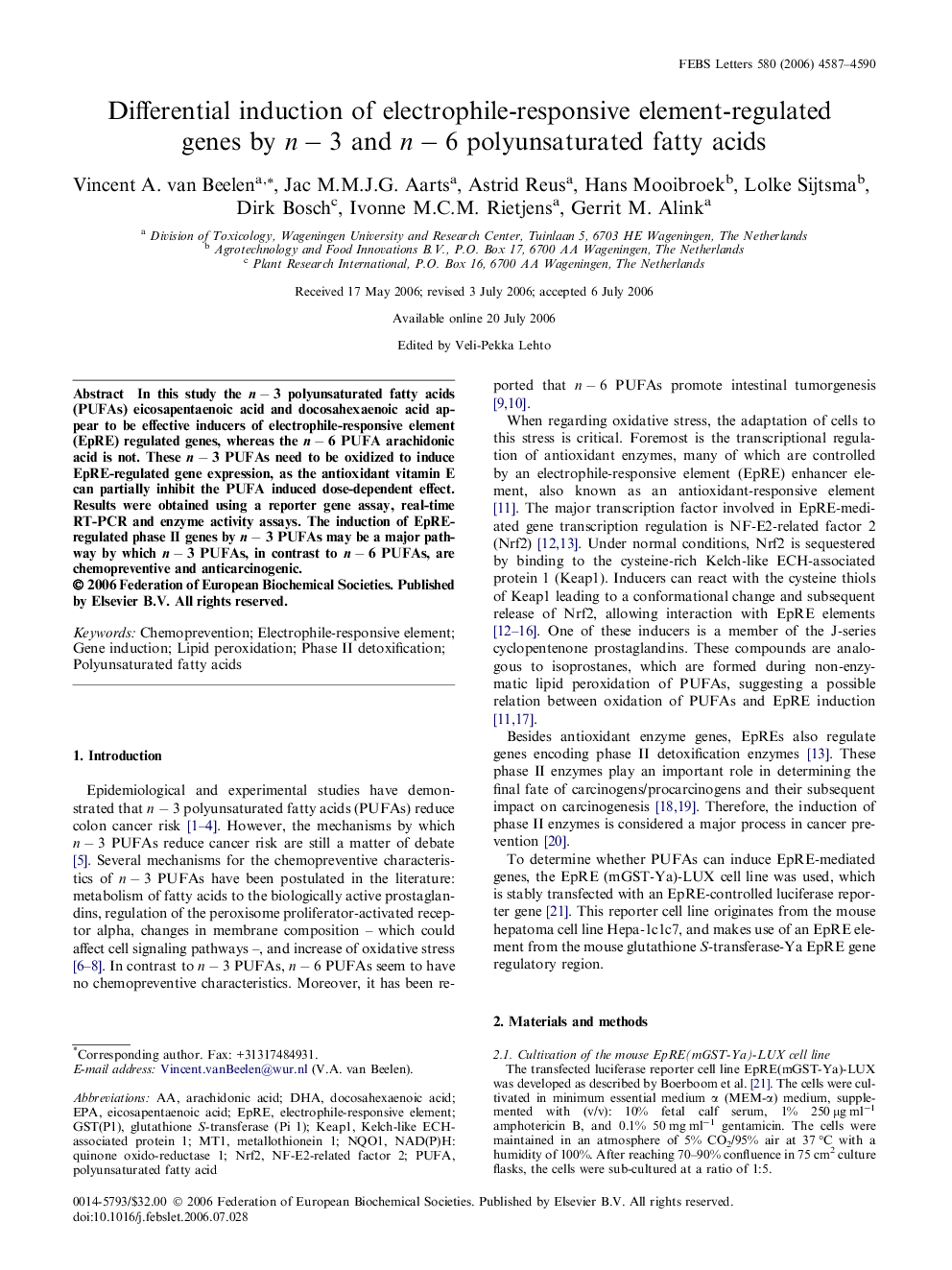| Article ID | Journal | Published Year | Pages | File Type |
|---|---|---|---|---|
| 2051223 | FEBS Letters | 2006 | 4 Pages |
Abstract
In this study the n − 3 polyunsaturated fatty acids (PUFAs) eicosapentaenoic acid and docosahexaenoic acid appear to be effective inducers of electrophile-responsive element (EpRE) regulated genes, whereas the n − 6 PUFA arachidonic acid is not. These n − 3 PUFAs need to be oxidized to induce EpRE-regulated gene expression, as the antioxidant vitamin E can partially inhibit the PUFA induced dose-dependent effect. Results were obtained using a reporter gene assay, real-time RT-PCR and enzyme activity assays. The induction of EpRE-regulated phase II genes by n − 3 PUFAs may be a major pathway by which n − 3 PUFAs, in contrast to n − 6 PUFAs, are chemopreventive and anticarcinogenic.
Keywords
Related Topics
Life Sciences
Agricultural and Biological Sciences
Plant Science
Authors
Vincent A. van Beelen, Jac M.M.J.G. Aarts, Astrid Reus, Hans Mooibroek, Lolke Sijtsma, Dirk Bosch, Ivonne M.C.M. Rietjens, Gerrit M. Alink,
